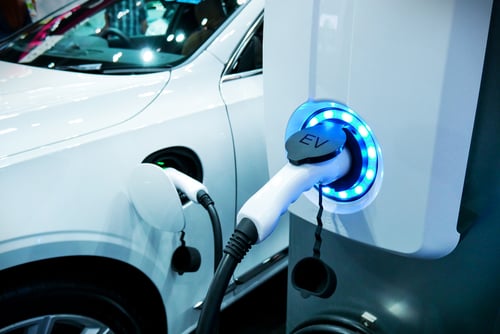Although emissions are often associated with the transport sector, buildings are responsible for around 40% of them globally. These emissions can largely be attributed to combustion-based heating appliances, and electricity consumption also counts if the local grid relies on fossil fuel-powered power plants.
Electrification can be an effective strategy for greening the construction sector as it removes emissions at the point of use. For example, a high-efficiency heat pump can compete with the operating cost of a gas heater, but without producing combustion gases. When building electrification is implemented in locations with a carbon-intensive electrical grid, emissions are simply transferred from buildings to power plants. However, this sets the stage for an eventual transition to clean energy sources.
Reduce your building's heating emissions with heat pumps.
Switching from gas to electric heating
Although electric heating systems have been around for a long time, they rely on resistance heating, which is extremely inefficient. A resistance heater consumes one kWh of electricity for every kWh of heat supplied, and this can result in a hefty energy bill. This is especially true in places with expensive electricity, like the Northeast states and California.
Gas heaters have much lower efficiency than resistance heaters, but they make up for this with very low operating costs. Electric resistance heating typically cannot compete with gas heating unless the building is located in a region with very high gas prices and very low electricity rates.
Air source heat pumps typically provide 2 to 4 kWh of heat for every kWh of electricity consumed, while ground source heat pumps can provide up to 6 kWh of heat for every kWh of electricity. If heat pumps are used for both space heating and water heating, they can eliminate most local emissions from buildings.
Heat pumps also have the potential to work with renewable generation systems, while combustion heaters always rely on some type of fuel. Even if a heating system runs on biomass, there are emissions from the combustion process. Additionally, biomass can be expensive unless a building has access to large amounts of organic waste.
How buildings can help electrify transportation

Electric vehicles have significant potential to reduce emissions, but there is a fundamental challenge: providing sufficient charging infrastructure for a large fleet of EVs. The construction sector can contribute by adding electric vehicle chargers to parking spaces, and fast charging systems have high potential because vehicle owners often stay in commercial buildings for only a brief period.
The combination of electrified buildings and EVs can remove most emissions from urban areas, contributing to air quality and health. However, electrification increases demand from energy companies; If they continue to rely on fossil fuels, emissions will simply be transferred to power plants and not eliminated.
Reducing emissions from the electricity sector
Solar and wind power have seen rapid declines in costs in recent years and can now surpass the cost of electricity from fossil fuels – even coal. However, these renewable sources are hampered by their dependence on sunlight and wind, which are variable energy sources. Solar and wind energy cannot be relied upon to cope with sudden spikes in energy consumption, as there is no way to increase their production.
Lithium-ion batteries are very promising in the energy sector as they can eliminate the main weakness of solar and wind energy – variable energy production. In theory, a solar photovoltaic system or a wind turbine with a battery bank could act as a dispatchable power source, much like a natural gas turbine driving a generator. Batteries are still hampered by their high cost, but the International Renewable Energy Agency (IRENA) predicts significant cost savings over the next decade.

